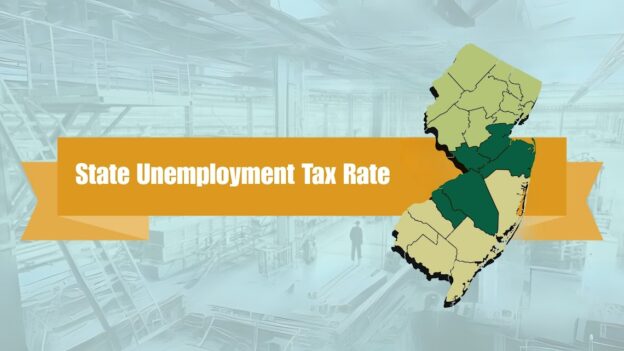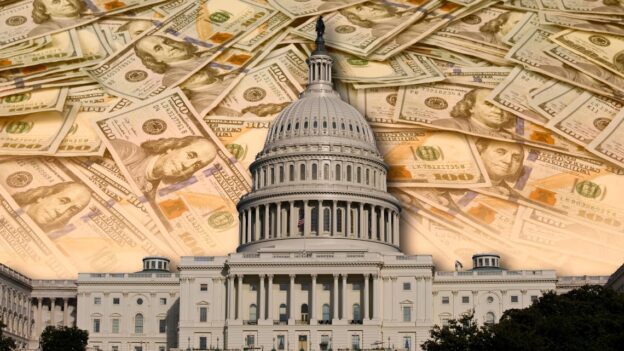Running a business in New Jersey comes with many responsibilities, and keeping up with state tax changes is one of the most important. In July 2025, the New Jersey Department of Labor will implement a shift to Unemployment Tax Table C, and for employers, this is good news.
Why? Because this move will actually lower unemployment insurance tax rates, potentially putting money back into your business’s bottom line.
If you’ve been bracing yourself for higher costs, it’s time to breathe a sigh of relief. Here’s what the change means, why it’s happening, and how your business can make the most of it.
What is the Unemployment Tax Table and Why Does it Matter?
Currently, New Jersey is operating under Tax Table D, which sets UI contribution rates from 0.6% to 6.4%. Starting in July 2025, the state will move to Tax Table C, lowering rates to a range of 0.5% to 5.8%.
Employer contribution rates to the UI Trust Fund depend on two factors:
- The overall health of the fund, which determines which column of the UI tax table applies to all New Jersey employers.
- Each employer’s history with unemployment claims, which sets their specific rate within that column.
The tax tables are set in statute by the New Jersey Unemployment Compensation Law and automatically update each fiscal year based on the fund’s status, ensuring rates reflect both state-wide and individual circumstances.
Why the Shift to Table C is Happening?
The Unemployment Insurance Trust Fund is funded by employer contributions and is used to pay out unemployment benefits to eligible workers. When the fund’s balance improves, often due to a combination of lower unemployment rates, careful fund management, and strong economic conditions, the state can lower the tax burden on employers.
New Jersey’s decision to move to Table C is the result of the Trust Fund’s continued recovery following the pandemic years. As more businesses reopened, fewer unemployment claims were filed, and the fund’s balance strengthened.
How This Change Benefits Employers
1. Lower Tax Rates Mean More Money in Your Business
For small and mid-sized businesses, especially, even a slight reduction in UI tax rates can make a noticeable difference. These savings can be reinvested into staffing, equipment, training, or expansion.
2. Predictable Costs Through Mid 2026
Because this change takes effect in July, you’ll be able to plan your budgets with greater confidence, knowing that your unemployment tax liability will be reduced for the remainder of the fiscal year.
3. A Positive Signal for New Jersey’s Economy
The shift to Table C reflects the state’s improved economic outlook. This stability can attract more business investment and growth across industries.
What Employers Should Do Now
While the move to Tax Table C is a clear win for employers, it’s still important to review your unemployment tax rate notice when it arrives. Your specific rate will depend on your company’s experience rating, the history of unemployment claims charged to your account.
Here are a few steps you can take:
✔ Review Your 2025 Rate Notice Carefully
When you receive your updated rate notice in the mail, check the numbers against your previous year’s rate to confirm the reduction.
✔ Evaluate Voluntary Contributions
In some cases, employers can make a one-time voluntary contribution to the Unemployment Insurance Fund to “buy down” their rate even further. This strategy can be especially effective when rates are already trending lower.
✔ Audit Your Unemployment Claims
Make sure all charges to your account are accurate. If there are any questionable claims, address them promptly with the Department of Labor.
Common Questions About the Table C Shift
Will every employer see lower rates?
Most employers will benefit from the shift to Table C, but the exact amount of reduction will vary depending on your business’s individual experience rating.
Does this change affect disability or other payroll taxes?
No. This shift applies specifically to the unemployment insurance portion of your payroll taxes.
Can my rate still go up even though the state is moving to a lower table?
It’s possible if your business has had a significant increase in unemployment claims. However, for the majority of employers with stable or low claims, rates should decrease.
Why You Should Still Pay Attention
It might be tempting to simply celebrate the rate reduction and move on, but smart employers know that unemployment taxes are just one part of a bigger picture. Keeping your claims low, maintaining accurate payroll records, and exploring voluntary contributions can lead to even more savings in the future.
At Dunn Corporate Resources, we specialize in helping employers navigate the complexities of unemployment cost control. We can review your rate notice, identify opportunities for further savings, and ensure that you’re not paying a penny more than necessary.
The Bottom Line
The July 2025 shift to New Jersey’s Tax Table C (0.5%–5.8%) from Table D (0.6%–6.4%) is a rare piece of good news in the world of business taxes. It reflects a healthier unemployment insurance system and offers a tangible benefit for employers across the state.
By understanding how the new table works and taking proactive steps to manage your unemployment tax account, you can maximize these savings and strengthen your business’s financial position.
Need help reviewing your tax rate notice?
We’re offering a no-cost analysis of your unemployment and disability tax accounts. Our specialists will help you understand your rate, uncover potential savings, and give you the confidence to make informed decisions.
Contact Dunn Corporate Resources today, let’s make sure you get every dollar of savings you deserve.
https://www.nj.gov/labor/lwdhome/press/2025/20250618_UI_Contributions.shtml




